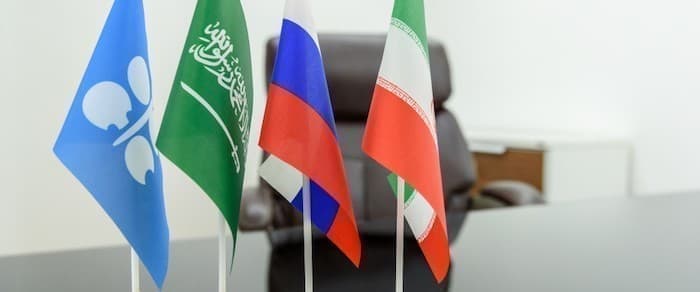Two conflicting reports about OPEC's plans for oil production surfaced earlier this week--both citing unnamed sources. One set of sources claimed that Russia was considering an extension of the current oil production cuts beyond the end of June. The other set of sources said that Russia was planning to ease the cuts starting in July. This is a perfect illustration of the uncertainty reigning over oil markets. This uncertainty, however, needs to be mitigated, and the most likely one to do it would be the OPEC+ club, together accounting for more than a third of global oil production.
How? By strategizing how to increase oil production in such a way as to not crash prices again-- but also in a way that will keep U.S. shale from stripping away all the benefits from higher prices. It's a tough conundrum.
Reuters' John Kemp wrote this week that OPEC+ needs to think about its exit strategy even if we are now just in the first month of actual production cuts. OPEC already has a questionable track record in reversing production cuts to its own benefit, Kemp noted, so the cartel might want to consider changing things, such as swiftly reacting to rising prices--as swiftly as it reacts to falling prices.
This would be difficult, however, especially with the wider OPEC+ group. The reason it would be difficult is the substantial difference between breakeven prices for, say, Saudi and Russian oil. This difference needs to be narrowed so the two can be more equal partners, with a larger shared interest.
Right now, Russia is comfy with cheaper oil than the Kingdom. This means it can reverse production cuts earlier without suffering too much, to prevent U.S. shale—the ultimate adversary of the OPEC+ group—from getting too bold with its own production plans.
Saudi Arabia, on the other hand, the de facto leader of Gulf producers, needs much higher oil prices, which puts it in the difficult position of pressing for extended cuts, often at its own expense, as John Kemp notes.
"Saudi Arabia tried to keep prices above $100 per barrel during the first shale boom (2012-2014) and then above $70 per barrel during the second shale boom (2017-2019)," Kemp wrote. "Both times, informal targets were too high and led to an unsustainable increase in U.S. shale as well as limiting global oil consumption growth, creating conditions for a subsequent price crash."
Related: Will U.S. Shale Survive If Oil Hits $40?
So, something fundamental needs to change--namely, the Saudi oil breakeven price. This, in turn, means economic reforms to make the country more resilient to oil price shocks. Riyadh has already been forced by the oil price crash to implement some austerity—from its perspective—measures. Perhaps it might be a good idea to keep these in place even after prices stabilize.
Indeed, this seems to be the plan.
"These measures that have been undertaken today, as tough as they are, are necessary and beneficial to maintain comprehensive financial and economic stability on the medium and long-term for the interest of the country and its citizens," Saudi Finance Minister Mohammed Al Jadaan said at the announcement of a 10-percentage-point VAT increase, the cancellation or delay of a number of public spending projects, and the discontinuing of cost-of-living allowances for public servants, which make up the majority of the Saudi population.
This is why U.S. shale was so successful in growing so fast so soon, at the expense of the former ruler of oil markets: it achieved much lower breakeven prices. If there is one lesson OPEC should learn from its experiences with shale, it is to lower breakevens, even if it causes some discomfort among the population.
It is a public secret that Saudi Arabia and other Gulf nations have been reluctant to implement austerity measures because they wish to avoid unrest among its citizens. Now, however, it seems like a risk they will just need to take if they truly want to protect their economies from future shocks. Once they do this, these producers might be better placed to respond quickly to any price increases that threaten to spark another surge in U.S. shale production. It's a fine line between success and failure, and OPEC will need to learn how to end up on the success side--and quickly--because prices are already on the rise.
By Irina Slav for Oilprice.com
More Top Reads From Oilprice.com:
- Oil Markets Could Soon Face A Devastating Supply Crunch
- Oil Slides As Russia Plans To Raise Production
- Trump Wants To Mediate In Escalating Conflict Between Asian Superpowers


















